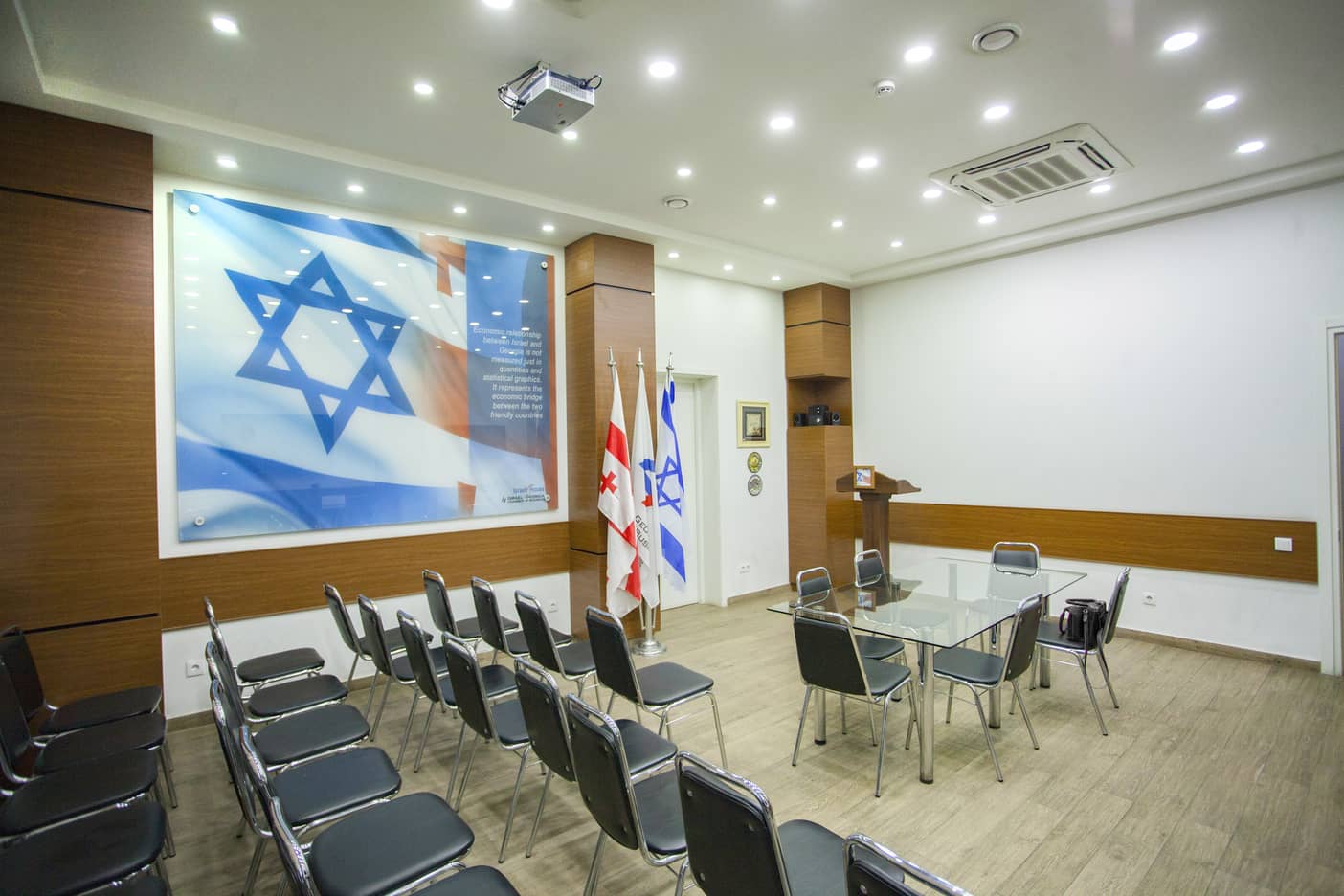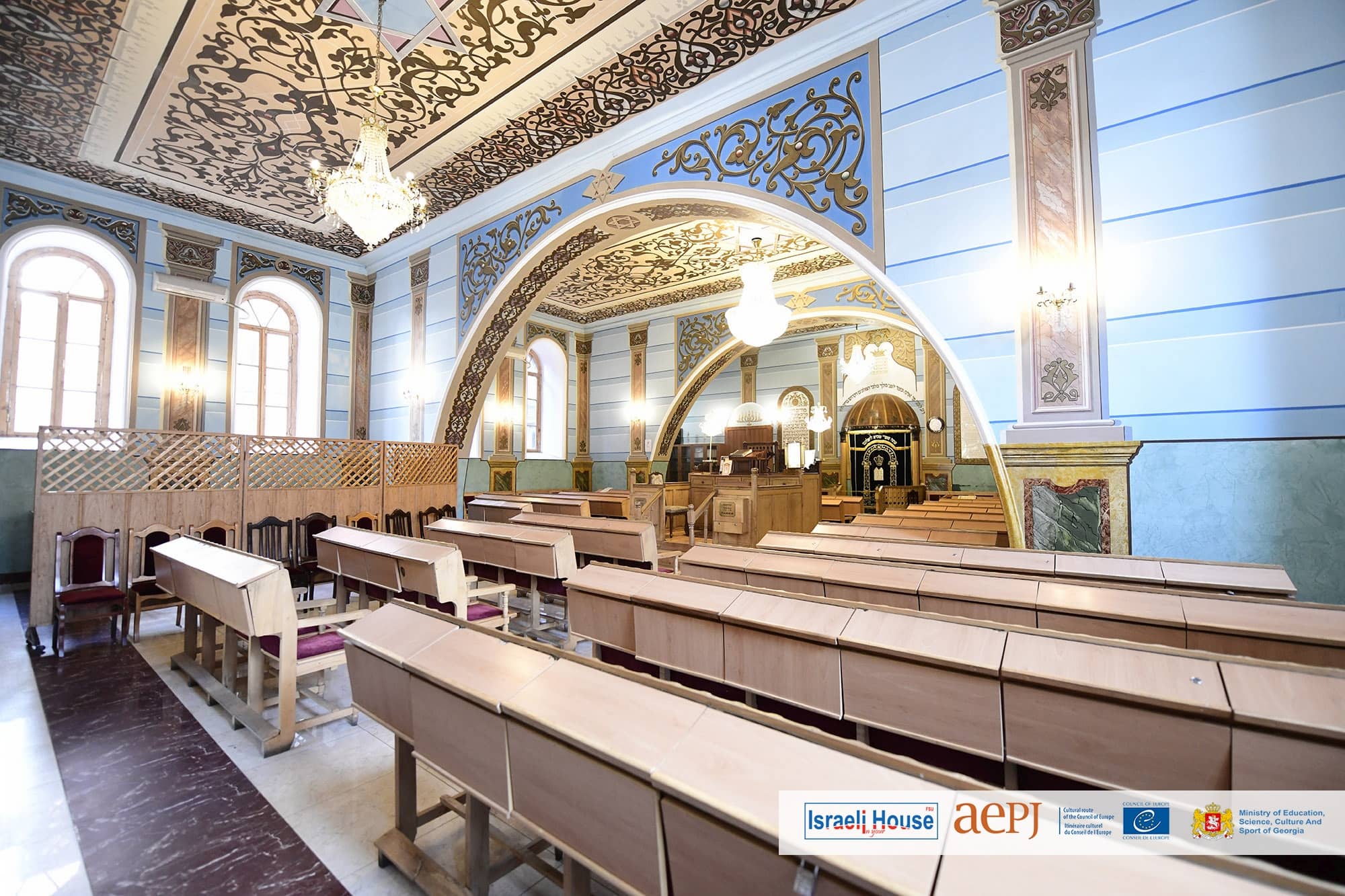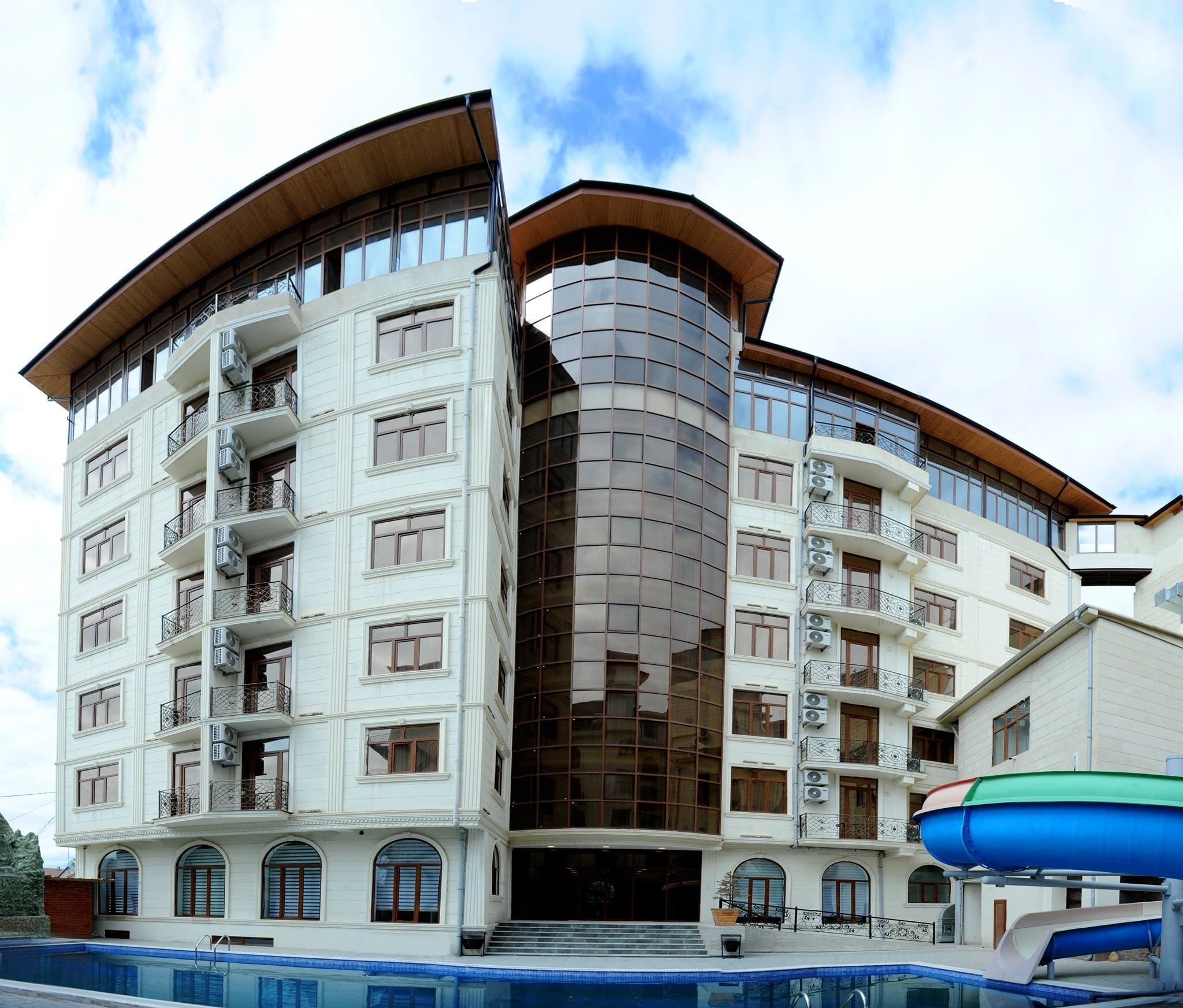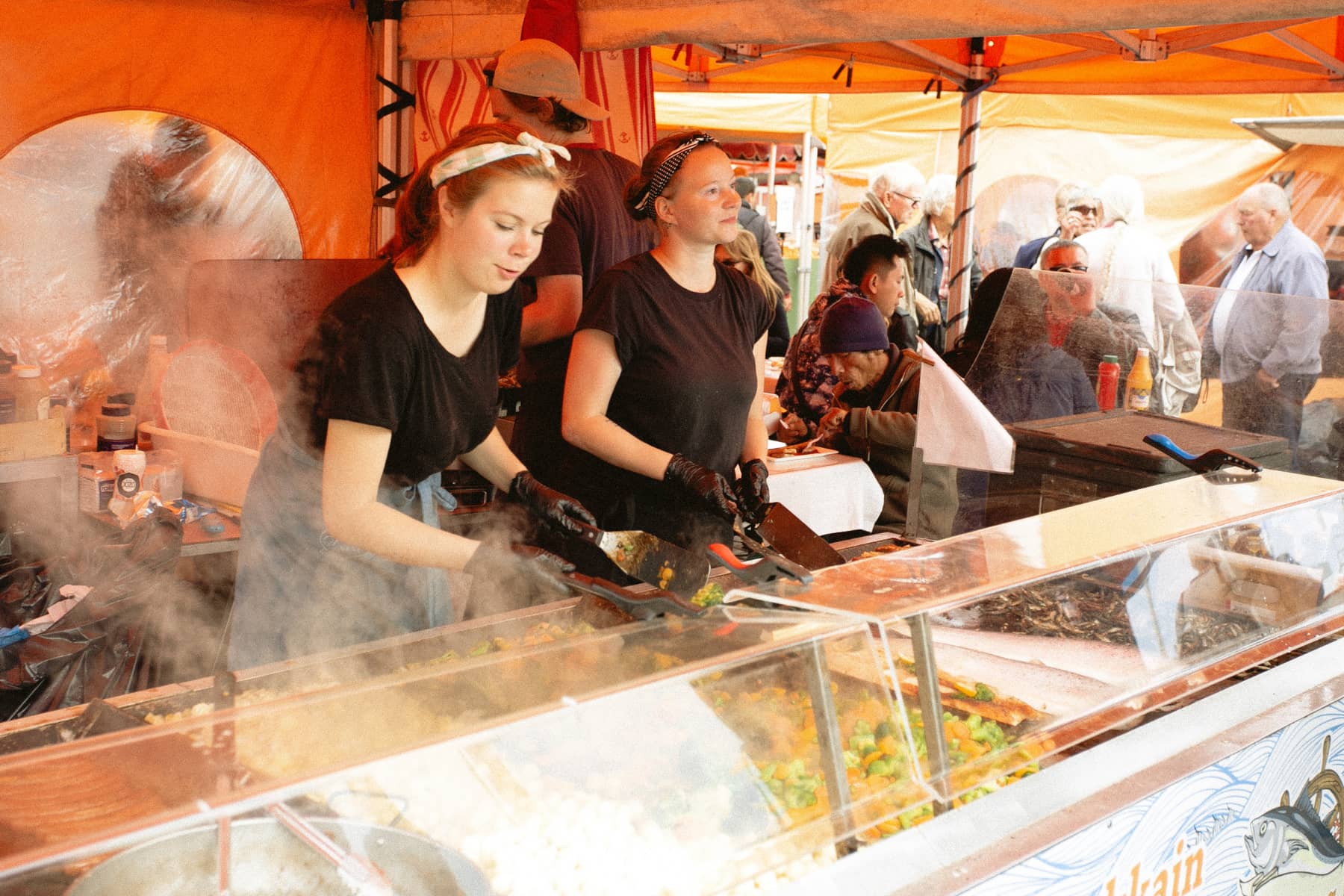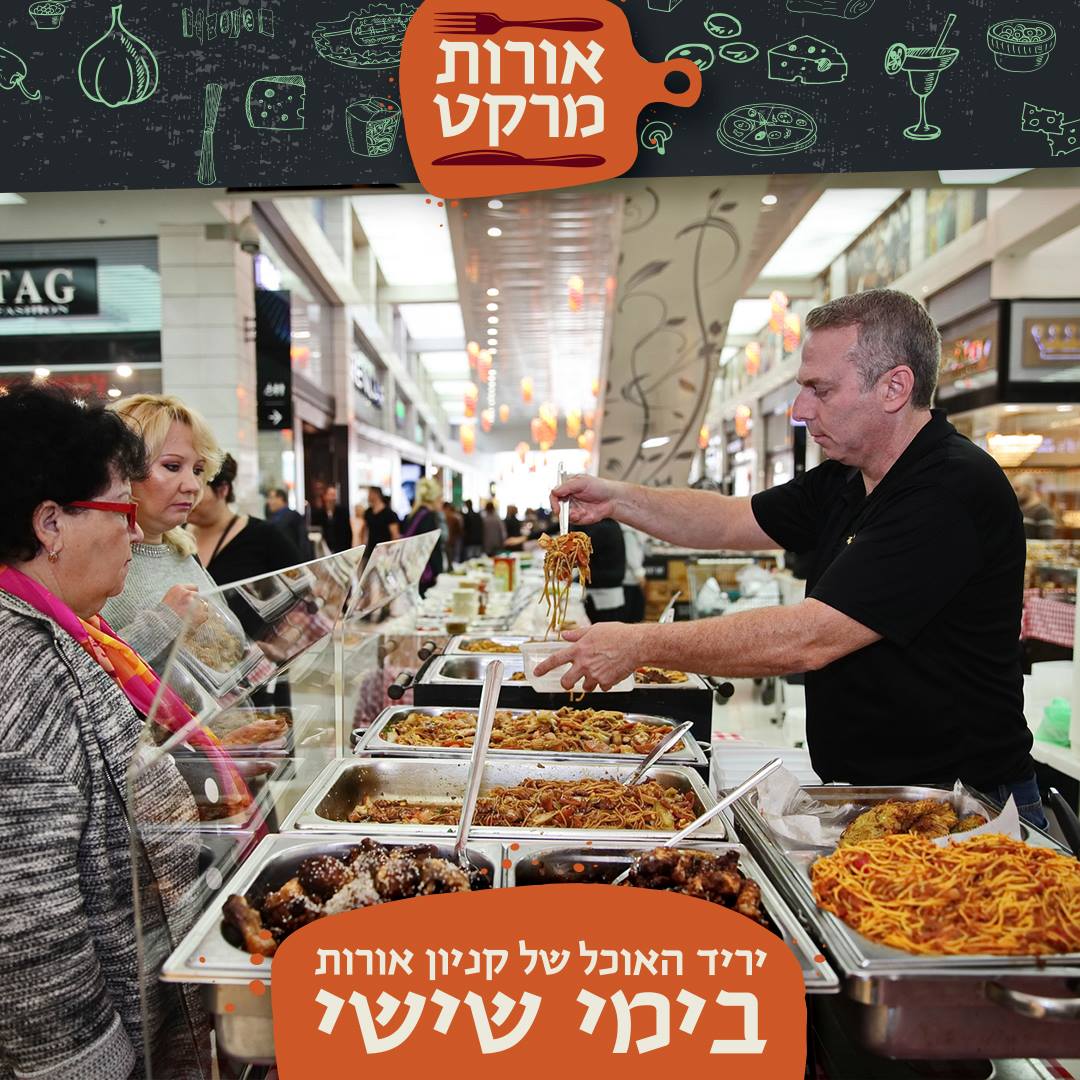The Israeli House NET (NGO) was established in 2013 in Tbilisi and works to achieve solidarity by public diplomacy and enhance the cooperation between Israel and friendly states, among them Georgia. One of the important goals is to promote the Jewish Heritage, and present it a bridge between Georgia, Israel and the World Jewry, and also to promote the remembrance of the Holocaust.
At the Israeli House NET, lectures on topics related to Israel, and Jewish Culture and Heritage are conducted regularly. Also, meetings, exhibitions, presentations and seminars are organized in the cultural, economic, business, technological or political spheres.
The organization’s Advisory Board includes international representatives: diplomats, leading businessmen, heads of the international organizations, academic staff and public figures.
The initiator of the organization is Itsik Moshe, the president of the Israel-Georgia Chamber of Business and the first representative of the World Jewish Agency “Sokhnut” in 1990-s when the “Great Aliyah” started from the USSR.
Archives: Directory listings
Directory listings
Ashkenazi Synagogue in Tbilisi
The Ashkenazi Synagogue, also known as Beit Rachel, was constructed by brick by the Jews of Tskhinvali in the 1910s. At first it was built for the Jews, who came from Iran and Kurdistan, but during soviet period most of them emigrated and this synagogue moved into the hands of Ashkanazi Jews. This is an active synagogue and it is located in the old Tbilisi, which is a historical district. The Ashkenazi Synagogue had been on the verge of collapse for a long time. Its first restructuring took place in the 1970s. The building was very damaged in 2001 due to an earthquake and needed capital restructuring. Jews living in Tbilisi and Moscow donated money to restore the synagogue, and it was renovated in 2007. In 2009 the re-opening of the newly redesigned Beit Rachel was celebrated. At first the synagogue was just one floor, but after the reconstructure the land was dug and a prayer room was placed on the floor under. Today the condition of the building is fair.
Great Synagogue
The Great Synagogue is located in the old historical district of Tbilisi, specifically in between of Tumaniani and Leselidze streets. The building, also known as “Synagogue of the Akhaltsikhelians”, was built in 1910 by Georgian Jews from Akhaltsikhe, hence the mention of the people from Akhaltsikhe in its second name. According to the journal “Droeba”, which was issued in the year 1909, constructing the building was a struggle because of its size, but due to the determination of the Georgian Jews it was set up. Edifice has two floors, the first of which is divided into four structural parts. The floors are partly similar, with some differences in their design. It is built by red brick and inside is painted with plant based motives, ornaments and orderial variations. The Synagogue was reconstructed in 2011-2012 years and the condition of the building is fair and active. Today, the Great Synagogue of Tbilisi is one of the most important tourist attractions in the city and it has a status of a cultural monument given by “Ministry of Culture and Sports of Georgia”. As it turns out, the synagogue has more than dozens of visitors daily, mainly tourists from Israel.
Givat Shmuel Food Fair
The Farmers Market takes place every Friday between the hours of 08:00-15:00 in the parking lot of a shopping mall in, Givat Shmuel. This market is part of a series of a chain of farmer’s markets that take place in Tel Aviv, Herzliya and Raanana. There is a variety of food stalls which include the produce from the best farmers, cheese-makers and bakers. In this market you are guaranteed to find a wide selection of the freshest vegetables, fruits, herbs, cheese, breads and olive oils as well as a large assortment of tasty homemade products.
Shahdag Guba and Truskavets Sanatorium
Shahdag Guba & Truskavets Medical Sanatorium is located in the center of Guba, in a pleasant corner on the banks of the Gudyalchay River, near Nizami Park. Once upon a time, there was a hotel complex called “Shahdag” in the Soviet era, but now the hotel has become a treatment and sanatorium complex equipped with the latest medical equipment, which is a source of healing for many diseases. It is also the second hotel of Shahdag Guba
Treatment tubs from Truskavets have been delivered to the Shahdag Guba & Truskavets Medical Sanatorium, based on the expertise of medical sanatoriums in this Ukrainian resort town.
Eilat Food Festival
The festival affords visitors the opportunity to taste dozens of dishes, including sandwiches and desserts, as well as alcoholic drinks. All the food carts are located in the same area, so visitors can easily test out restaurant after restaurant to see what local eateries have to offer. For three consecutive nights, visitors can taste dishes from well-known Eilat restaurants, chef’s restaurants, and fast food places, against the enthralling beauty of the Gulf of Eilat and the Red Sea. The carts feature all types of dishes – meat, fish, sandwiches, and pizzas – including decadent desserts, boutique beers, cocktails, and special chef’s dishes.
Between bites, visitors may enjoy the many musical performances by some of Israel’s leading artists, including afternoon shows by pop stars beloved by Israeli kids to live performances for adults at night. The performances are free of charge and the dishes offered at the food carts are generally sold at low prices.
Visitors to the Eilat Food Festival can also enjoy everything else the city has to offer during their stay. During the day, the beaches are an obvious option. And if you need a fix of adrenalin, several extreme water sports are available all along the Red Sea shore. Within the city, you can shop for virtually anything without paying VAT as well as enjoy attractions suitable to the entire family. And don’t forget to leave room in your tummy for the evening meal!
The official date for next year’s event will be announced on the event’s website.
Orot Market Food Fair
For more than ten years, this weekly fair has been taking place at the Orot Mall, with more than thirty food stalls to satisfy passersby. The freshly baked breads topped with homemade spreads and artisan cheeses can win anyone over. Enjoy salads, Chinese food, baclava, cookies, and other delights.
Haifa Food Fair
The Farmers Market takes place every Friday between the hours of 08:00-15:00 in Azrieli Mall in Haifa. . There is a variety of food stalls which include the produce from the best farmers, cheese-makers and bakers. In this market you are guaranteed to find a wide selection of the freshest vegetables, fruits, herbs, cheese, breads and olive oils as well as a large assortment of tasty homemade products.
Ha’ochel Ha’kafri Festival
Just a short drive from the center of the country, this rural festival takes place in an area abundant with beautiful views and nature- Mate Yehuda. This exceptional festival has a different vibe from typical food fairs, as local cooks open their homes and hearts to serve traditional dishes from many cultures. The personal and unique adventure of eating at a host family’s home, makes the experience that much more authentic and enjoyable, and is something unobtainable in any store or restaurant. This area of the country has a diverse population, which is reflected in this fascinating and flavorful culinary event.
Sommelier Wine Festival
Although wine festivals have taken the country by storm, few can compare to Tel Aviv’s Sommelier Wine Festival. This event features wine from all over the world, of course highlighting specialties from our Israeli wineries such as those in the Golan Heights. Although originally more of an industry exposition created to appeal to restaurants, critics, wine buyers, etc., this affair gives the public a chance to taste some special, and often unreleased wines. There are more than fifty Israeli wineries at this trade show, offering samples of their highest quality wines. Some specialties include Israeli ice wines and orange wines.
